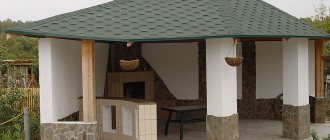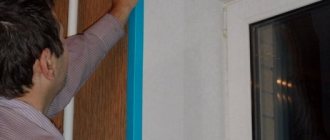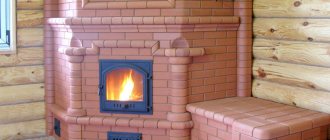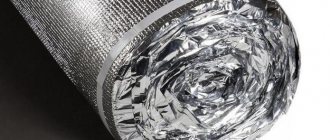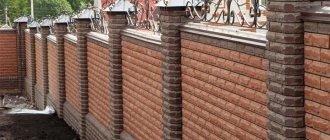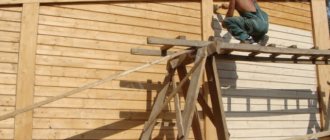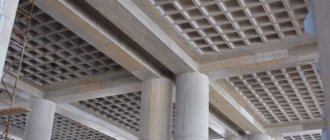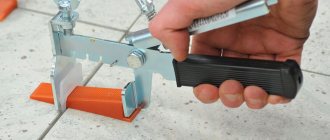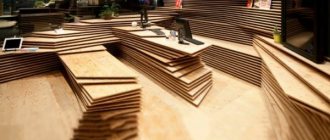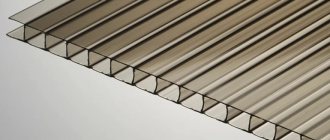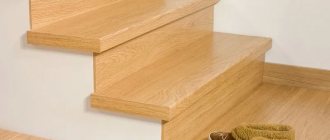The strength of the structure as a whole depends on the quality of the glue used for laying expanded clay concrete blocks.
After all, it is this binding composition that is responsible for the adhesion of building elements to each other.
Therefore, it is so important to know what glue is used for laying expanded clay concrete blocks, what is included in its composition, what its pros and cons are, and how to use it correctly. Read about this and more in the article.
What adhesive composition are used to lay expanded clay stones?
For laying expanded clay concrete blocks, three types of compositions are used :
- universal;
- heat-saving;
- winter.
Each of these compositions has its own characteristics that need to be taken into account before making a choice.
Classical
Classic glue is used for laying expanded clay concrete and other porous blocks. It contains no components that would give it special properties.
This glue can be used during construction in the warm season. It fills defects, chips and unevenness well, is economically consumed and inexpensive.
Manufacturers:
- Founded by Seloform.
- Hedgehog.
- Masterblock De Luxe.
- Ytong for thin joint masonry.
The main disadvantage of classic glue is that it does not contain additives that allow it to work at sub-zero temperatures.
Winter
The main feature of winter glue is the ability to use it in the cold season . It contains components that prevent the composition from freezing at sub-zero temperatures. In the cold it does not deform and does not lose elasticity.
Use at temperatures down to -10 degrees.
Winter composition brands:
- Dauer Block. Contains antifreeze additive down to -10 degrees.
- AeroStone. Winter adhesive for thin-seam masonry walls up to -10 degrees.
- Ytong winter.
The use of winter adhesives allows you to avoid the formation of cold bridges and lay out the blocks evenly and cleanly. Most of these compositions are marked not only “frost-resistant”, but also “moisture-resistant”.
The disadvantages of winter composition include higher cost , so if work is carried out in the warm season, it makes no sense to buy it.
Heat saving
Heat-saving adhesive avoids the formation of “cold bridges”. As a result, the room is always maintained at a comfortable temperature. Heated air does not leak through the cracks that can form when laying blocks with conventional mortars.
Manufacturers:
- Thermal insulating masonry mixture Promix with a reduced thermal conductivity coefficient.
- Masonry thermal insulation adhesive Perfekta Linker Thermo Profit.
- Adhesive for cellular concrete Stone Flower Magma.
Heat-saving glue has no disadvantages. The only drawback can be considered the higher cost compared to the classic composition.
Mix for laying expanded clay concrete blocks
DIY adhesive clay concrete blocks: step-by-step instructions, technology, masonry mortar
If expanded clay concrete blocks are laid with your own hands, step-by-step instructions
will help you get the job done right. Such manipulations are not particularly complicated, so you can do business independently without turning to specialists.
However, it is necessary to familiarize yourself with the technological features, as well as find out which solution is suitable for laying expanded clay concrete
products that are produced by pressing, during which water, sand, cement and expanded clay are used.
Varieties
Ceramic concrete blocks, the pros and cons of which are described in the article, are a safe, environmentally friendly and lightweight building material. Thanks to the presence of expanded clay, the products are porous and characterized by high thermal insulation qualities.
Before starting work, you can choose blocks of different sizes, but the most common are those that have the following dimensions: 390h300h188, 390h190h188.
These products are used for walls, while for the formation of partitions, blocks measuring 390x190x90 mm are preferable.
Characteristics
The material can be solid or hollow. The first grade has higher strength, but is inferior in thermal insulation properties to its hollow counterparts. If you plan to strengthen walls or partitions, it is necessary to purchase blocks in which grooves were formed at the production stage for reinforcement. This is due to the not too high strength of the material.
What does the material contain?
The composition of the adhesive for expanded clay concrete blocks includes the following components :
- Portland cement. It acts as the main binding agent.
- Sand. To produce high-quality glue, fractionated sand that has undergone purification is used. It is necessary to give the mass plasticity. When there is a temperature difference, it is the sand that prevents the wall from cracking.
- Polymers . They are needed to fill chips and unevenness on the blocks. Thanks to polymers, the adhesion of the adhesive to the surface increases.
- Modifiers . They prevent the formation of cracks in the adhesive base and prevent heat from leaving the room.
All components included in the adhesive must be indicated on the packaging. If this information is missing, you should not purchase such a product.
How to cook it correctly?
In order for the glue to fully exhibit its adhesive properties, it must be properly prepared. Depending on the manufacturer, the instructions may differ, but significant deviations from the universal algorithm are rare.
The procedure is as follows:
- Water is poured into a suitable container in the amount needed to prepare the adhesive mixture. The exact proportions are indicated on the packaging. The water must have the optimal temperature, which is indicated in the instructions.
- Pour dry glue from the pack into the water.
- Mix the mixture until a uniform base is obtained. To ensure that there are no lumps left in the glue, it is recommended to use a construction mixer. As a result, the sticky mass should resemble sour cream. When applied to blocks, it should not flow or spread.
- Let the mixture brew. This will take about 10 minutes.
If it was not possible to use the entire composition, you should not leave it for storage. After hardening in the container, the glue loses its properties, which do not return when re-moistened.
Selecting the type of blocks and glue for them
Not so long ago, block houses were in extremely low demand, as they were cold and unprotected from destructive environmental factors. But today the situation has changed dramatically.
Indeed, light, practical and durable blocks (gas silicate, expanded clay concrete, foam concrete and others), as well as high-quality and multifunctional adhesives for blocks, have appeared on the modern building materials market. Therefore, the demand for block houses – complete, reliable and cost-effective buildings with high performance properties – has increased.
And about what type of blocks to give preference to; about the advantages of using special adhesives for foam blocks, for porcelain stoneware, for aerated concrete, produced by LISMIX; Block construction technologies will be discussed in this article.
What are the building blocks?
Expanded clay concrete blocks
This building material, especially in demand today, consists of sand, cement and expanded clay (burnt clay). The production of expanded clay concrete is based on the process of vibrocompression with steaming. Having solid and hollow structures, expanded clay concrete blocks are used in the construction of load-bearing walls and partitions, for laying openings in monolithic buildings and many other construction fields.
Characterized by greater strength (compared to other wall blocks), expanded clay concrete has high frost resistance and a long service life. Due to its fairly low water absorption, the material is resistant to weather conditions and does not shrink at all during construction.
Therefore, by choosing expanded clay concrete blocks for construction, you will receive a warm, reliable, heat-saving and environmentally friendly house.
True, subject to compliance with construction technology, which involves the use of a special masonry mortar - glue for blocks, which has low thermal conductivity and high strength.
| Interesting fact: All European countries with harsh climates - Norway, Sweden and others - use expanded clay concrete as the main building material. |
But expanded clay concrete walls have one drawback - they are not as aesthetically pleasing as, for example, foam concrete. And to give the house a more presentable look, you can use any type of exterior finishing, one of which is to cover it with tiles using “Super Plus” LISMIX porcelain tile adhesive.
Foam concrete blocks
Foam blocks are a modern and popular material for walls, containing cement, sand and special foaming agents. The production process is based on the polarization of the solution or mineralization of the foam with further heat treatment. It is possible to lay it both on a cement-sand mixture and on glue for foam blocks in low- and multi-story construction, during the construction of partitions, for laying openings and much more.
After all, having a low weight, ideal geometry and specially created adhesives for laying foam blocks, the material is characterized by fast installation rates and cost-effectiveness of both the construction and operational processes. Provided, of course, that the installation technology is followed (using frost-resistant and high-strength glue for foam blocks) and proper waterproofing. After all, foam concrete is less resistant to environmental influences than, for example, brick.
Due to the porous structure of the foam block, on the one hand, it has low thermal conductivity (which means that during construction you can save on insulating the structure), but on the other hand, it can shrink. And the low cost of the material fully justifies any of its “cons,” which can be easily corrected using glue for foam blocks, the price of which is much lower than its performance characteristics.
Gas silicate blocks
Belonging to the category of cellular concrete, a gas silicate block is a porous and lightweight building material formed as a result of the hardening of a mixture of binder, water, fine silicon component and a gas-forming agent.
The advantages of gas silicate walls include:
- high thermal insulation provided by the porosity of the material,
- greater strength - from 10 to 50 kg/cm2,
- beautiful geometry
- low thermal conductivity,
- and light weight.
The stability and stability of the gas silicate block wall is determined by:
- ease of installation using special adhesive for gas silicate,
- small thickness of the seam, guaranteed by the professionalism of the builders and the quality of the glue for gas silicate blocks.
Blocks of the same size do not require additional adjustment, and a smooth and aesthetic surface will allow you to significantly save on external finishing.
Thus, gas silicate is the choice of those who want to reduce the cost of the construction process. After all, the size of the blocks allows you to reduce the amount of construction and finishing materials. And the simplicity and fast pace of installation (using glue for gas silicate blocks) will reduce labor costs and increase the efficiency of the entire construction.
Aerated concrete blocks
Aerated concrete differs from gas silicate mainly only in the use of a binder in the mixture - lime or cement, respectively. Therefore, like all cellular concrete, aerated concrete blocks have many advantages over traditional brick, both in terms of sound-proofing and heat-insulating qualities, being inferior only to it in structural strength.
Flow calculation
To correctly calculate the glue consumption, you need to take into account the characteristics of the coating on which it will be applied, as well as the experience of the worker doing the laying.
The average consumption for calculating the mixture is as follows:
- For 1 m2 of blocks with a layer thickness of 1 mm, it takes from 1.3 to 1.7 kg of dry glue.
- A standard bag of glue weighs 25 kg. This volume should be enough for blocks with an area of 1 m3.
- To prevent the glue from running out at the most inopportune moment, you need to add another 10-15% of dry matter to the calculations obtained, since more glue will be consumed during the work. In some areas, cracks and chips will have to be repaired; in some areas, the technician may accidentally drop some of the adhesive, etc.
You should not try to reduce glue consumption by reducing the thickness of the masonry. This will affect the quality of construction. In order not to waste excess dry matter, you need to dilute it in a small amount: enough to last for an hour of work.
The best brands
The construction market offers products from many domestic and foreign manufacturers. According to reviews, concrete adhesive, which is considered one of the best, is produced by Ceresit.
Domestic brands are no less popular:
- "Leader";
- "Polymen";
- "Polyrem."
Demanded products from foreign manufacturers:
- Bostik;
- Findley;
- seder;
- Emfi;
- Knauf;
- Jovi.
Advice! The leading position as a mixture used for cellular concrete is occupied by the Monolith brand.
Features of work
When using glue for laying expanded clay concrete blocks, you need to take into account the following features of its use:
The building material must be clean. It is unacceptable for snow, dirt, sand, oils or other deposits to stick to it.- For gluing, you can use blocks with intact geometry. If they have chips, cracks or unevenness, they refuse to lay such elements, since it will not be possible to achieve a strong adhesion.
- Before using glue, you should carefully read the manufacturer's instructions. The classic composition is diluted at a temperature of +10 degrees (unless otherwise indicated on the package).
- It is not recommended to dilute a large amount of glue in advance. The mixed mass must be used completely.
- To ensure that the glue does not stagnate during work, it must be stirred periodically.
- If the masonry is uneven, there is a shortage or excess of glue in some area, or other adjustments are required, they must be made immediately.
- Until the composition completely sets, the erected structure is covered with a tarpaulin. This rule is relevant when using frost-resistant glue.
- Regardless of the type of composition chosen, masonry should not be carried out in bad weather, during precipitation, with strong gusts of wind, or with sudden changes in temperature.
Laying expanded clay blocks with your own hands
Hi all! The construction of buildings from expanded clay concrete blocks is similar in technology to construction from conventional brick, but it also has some features. Next, we will look at what you should pay attention to when preparing and laying expanded clay blocks with your own hands.
Tools and materials
During the construction process, in addition to expanded clay concrete blocks (we looked at how to choose the right expanded clay blocks here), you cannot do without:
- Tape measures, building level, plumb line, trowel, trowel, jointer and rubber mallet;
- grinders with a circle for working on stone;
- containers and shovels or compact concrete mixer for preparing the masonry mixture;
- steel or fiberglass reinforcement or steel / nylon / fiberglass reinforcing mesh;
- personal protective equipment (gloves, goggles, respirator).
In addition to expanded clay concrete blocks, we will need brick or concrete M 300 - 350 and reinforcement to form an armored belt on which the rafter system will rest.
The masonry mortar is mixed in the following proportions: cement (1 part), river and quarry sand (3 parts), water (about 30% of the volume of the dry mixture).
Preparatory stage
When developing a construction project made from expanded clay concrete blocks, it is necessary to immediately calculate the length of the walls in terms of solid blocks, taking into account masonry joints. The width of the seam horizontally and vertically must be at least 10 mm, this makes it possible to compensate for errors in the geometry and dimensions of the blocks that are inevitable in the manufacture of this piece material.
Also, at the design stage, the type of blocks is selected - for the main walls of a house of two or three floors, it is better to use solid blocks; light construction can be erected from hollow elements. Hollow partition blocks with good sound insulation are ideal for internal partitions.
Please note: if you decide to do without external cladding of the walls, laying them out of expanded clay blocks, you will need to use special glue, as well as ready-made half-blocks and other elements for aesthetic masonry, also keep in mind that cladding blocks are much less amenable to cutting.
At the preparatory stage, a scheme for laying expanded clay blocks is developed - it is customary to use the classic version with a shift of half a block (similar to brickwork), or to shift each subsequent row to one side by 10 cm.
Technology of laying expanded clay concrete blocks
The concrete foundation must fully set and stand. Before starting masonry work, it needs to be leveled using a thin-layer concrete screed or bitumen, then a double layer of rolled waterproofing is laid (roofing material can be used as a rolled insulator) around the perimeter and in places where partitions are installed. If you are interested in reading how to properly waterproof a foundation, you can do so here.
Important: the construction of external walls and internal partitions is carried out simultaneously! To cut blocks, it is most convenient to use a grinder with a stone-cutting disc. It is recommended to prepare the working mixture in small portions to avoid partially setting the composition - this will negatively affect the reliability of the masonry.
How long does it take to set and gain strength?
A high-quality composition cannot set too quickly . However, in some cases, high speed is a production necessity. Therefore, the minimum time this process can take is 15-20 minutes, and the maximum is 3-4 hours.
If the glue takes longer to set, then it may not be a quality material. With such a mixture, the blocks will move out, which will make masonry impossible.
You also need to distinguish between the setting time of the glue and the time required to gain strength. It can range from 1 to 3 weeks.
Characteristics that a quality composition must have
In accordance with European quality standards, a reliable product must have the following properties:
- Maintains characteristics for 1-4 hours.
- The standard mixture should not be covered with a film for 20 minutes, quick-drying - 10 minutes.
- The permissible maximum surface slip after applying glue is half a millimeter; ideally, there should be no slip at all.
In order for buyers to be able to choose the most suitable composition for use in specific conditions and for a specific purpose, manufacturers mark their products with codes:
- G—liquid mixture;
- T - without creeping effect;
- F - fast-hardening agent;
- E - allowed to be kept open;
- C2S - resistant to deformation;
- C2 - composition with improved characteristics;
- C1 is a regular mixture.
Pros and cons of this material
Advantages of using glue for building walls made of expanded clay concrete blocks:
No smell.- Fast hardening.
- Economical consumption.
- Easy to use.
- High plasticity.
- Small thickness of seams.
- Possibility of use for external and internal work.
- Resistance to mechanical stress.
- Increased adhesion to the surface.
- Possibility of use in winter (if you purchase a special composition).
- Preservation of heat indoors.
Disadvantages of using adhesive solution:
- The need for strict adherence to safety regulations. The product contains chemical components that, if they come into contact with the eyes or skin, cause severe irritation.
- Higher cost of glue compared to classic cement mortars.
- Lack of reusability.
Ceresit
High efficiency of glue application is achieved by adding a special plasticizer. The products of this brand are characterized by improved adhesive properties, minimal slipping of cladding elements and an affordable price. The glue is based on white cement.
"Ceresit 115" is recommended by the manufacturer for use at the following sites:
- old cladding;
- screeds outside the house with heating;
- outdoor swimming pools;
- roofs;
- floor on the balcony or terrace;
- stairs outside buildings.
What other masonry mixtures can be used?
If the blocks have significant unevenness and damage, then instead of glue you can use cement mortar . It is a cheap alternative to adhesive compositions and is used for fastening low-quality blocks.
If the layer of glue when laying blocks is about 1-2 cm, then cement joints can be 5 cm or more wide. However, walls based on such a solution are reliable and durable. Its main disadvantage is the low heat saving rate, with the formation of cold bridges. Therefore, special attention will have to be paid to finishing.
It may seem that using homemade cement mortars is more profitable from an economic point of view. However, its consumption is significantly higher than that of glue, and more time has to be spent on laying .
Types of glue
- Ordinary. Can be used when working with gas silicate, expanded clay concrete and other types of piece masonry. With its help, chipped edges, potholes or uneven surfaces can be easily restored.
- Winter. Based on the name, it is clear that this glue is used for masonry in low temperature conditions.
- Heat saving. With this glue, the so-called cold bridges (areas of reduced thermal resistance) are not at all dangerous. He is also capable of eliminating edge defects.
Brands on the market
Construction stores offer many types of construction adhesives for foam concrete from various manufacturers. The difference is in the concentration of additives and plasticizers. Some of the brands are presented in the table:
| Brand | Purpose | pros |
| "Hercules" | For foam and aerated concrete, gas silicate and cinder blocks, sibit | Alignment of defects |
| Masonry strength M100 (high) | ||
| Thin layers | ||
| Low thermal conductivity | ||
| Long setting period for the mixture | ||
| Economical | ||
| "Rusean" | For any type of concrete, including polystyrene concrete | Frost resistance |
| Low consumption | ||
| Strength of cement in M500 composition | ||
| Operating temperature +5 to +20 °C | ||
| "Volma-block" | To maintain the thermal insulation properties of foam concrete by thin layering and reducing the number of cold bridges | There is a frost-resistant option |
| Thin layers | ||
| "Ceresit" | For interior and exterior use | High adhesion |
| Frost resistance | ||
| Long pot life of the solution | ||
| "Osnovit" | For any type of cellular concrete | High strength |
| Average curing time | ||
| Economical |
Useful tips
Advice from professionals will allow you to complete the work with the highest quality possible, while ensuring a strong, durable and reliable connection of building materials:
- Pour the dry mixture into the water, not the other way around.
- Adhesives are characterized by rapid setting, so do not prepare too much of the solution at once.
- Clean the surface of dust and dirt before applying the mixture.
- When using ordinary cement mortar, add PVA glue to it, this will significantly increase the adhesive properties of the mixture, its ductility and make the connection stronger.
- Do not skimp when choosing the composition, since it determines how durable and strong the structure will be.
Introduction to the topic
The widespread use and popularity of blocks is caused by the good technical and operational characteristics of cellular concrete materials. Brickwork is inferior to blocks because it requires a lot of time and puts a significant load on the foundation. The building blocks are large in size, but have minimal weight, so the installation speed increases significantly. Foam blocks and gas silicates can be installed on any type of foundation, including shallow foundations, and can be used to build low-rise buildings. The advantages of using building blocks are obvious:
- Minimum load of wall structures on the base.
- Prompt construction of residential buildings and other buildings.
- Economical consumption of adhesive solution for installation.
- High strength of buildings made of cellular (porous) concrete.
- Low thermal conductivity and vapor permeability of the material.
Adhesive for blocks fixes structural elements together as firmly as possible, thanks to the introduction of special components into the composition. Using adhesive compositions, monolithic load-bearing walls, interior partitions, and internal walls made of gas and foam concrete are erected. Lightweight building material is gradually replacing traditional buildings made of brick and wood.
On a note! The use of reinforcement belts between aerated concrete and foam blocks allows the construction of not only one-story buildings, but also houses with a height of two and three tiers.
How to calculate how much glue you will need
The cost of adhesive mortar when laying light blocks of cellular concrete is influenced by the type of material and installation features. Highly porous products require more glue. It is necessary to take into account moisture absorption and the thickness of the seam being formed. The following factors influence glue consumption:
- Masonry conditions: dry, windless weather, negative temperatures, high humidity, heat.
- The presence of deformed areas on the surface of the blocks - more ready-made mixture is required to fill cracks and chips.
- The type of block material is lightweight cellular concrete with a large number of pores or dense autoclaved silicate.
- The thickness of the formed layer depends on the geometry of the blocks; the recommended value is indicated by the manufacturer on the packaging.
- The area of the processed surface - the dimensions of block building materials are not the same.
- Geometry of building materials - if the blocks are uneven, more glue is needed for perfect masonry.
If we compare the installation of masonry using classic cement-sand mortar or special glue, in the second case the costs of the finished mixture and the labor intensity of the work are significantly reduced. The use of adhesives allows you to make thin interblock seams up to 5 mm, which have very high strength and maximum adhesion to the surface.
According to construction standards, the adhesive consumption for gas and foam concrete is on average 1.5-1.6 kg of dry mixture per 1 m3 when applying a 1 mm thick seam. Minimum consumption is possible if the blocks are perfectly flat and the laying technology is followed.
Tip: To form thin seams and prevent the formation of cold bridges in the masonry, it is better to use adhesives with fine-grained filler. The result is thin, smooth seams of optimal strength, not susceptible to the formation of dampness and fungus.
Tips for saving glue
Dimensions of the standard block – 200x300x600 mm. Based on these parameters, manufacturers set the recommended rate of glue consumption for the construction of block structures. In order to carry out the laying correctly and spend less glue, the master should adhere to some rules:
- The product must be applied in compliance with the temperature regime.
- For winter work, special frost-resistant glue is used.
- Mix dry powder with water according to the manufacturer's instructions.
- The solution is mixed in measured portions so that it does not dry out.
- The glue is applied in a thin layer, following standard rules.
The mixture is applied to the surface of the block with a notched trowel, which saves 20-30%. To prevent moisture from evaporating from the solution very quickly, it should be prepared in a warm room and then delivered to the construction site. To obtain a homogeneous adhesive mixture, the solution is constantly stirred.
Block structures are replacing brick buildings because they require less time and money to build. The use of adhesives simplifies the installation process and allows you to build strong walls that are well protected from atmospheric and mechanical influences. The quality of the masonry depends on the properties and characteristics of the glue, so the choice of product must be approached responsibly.
